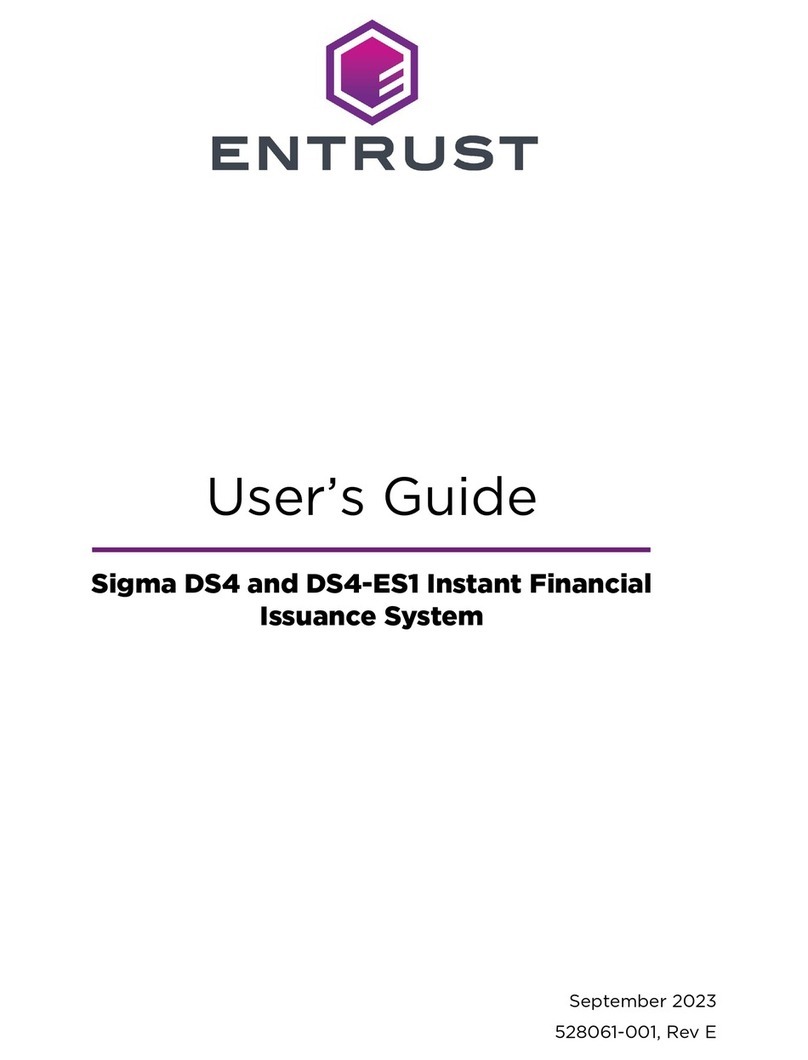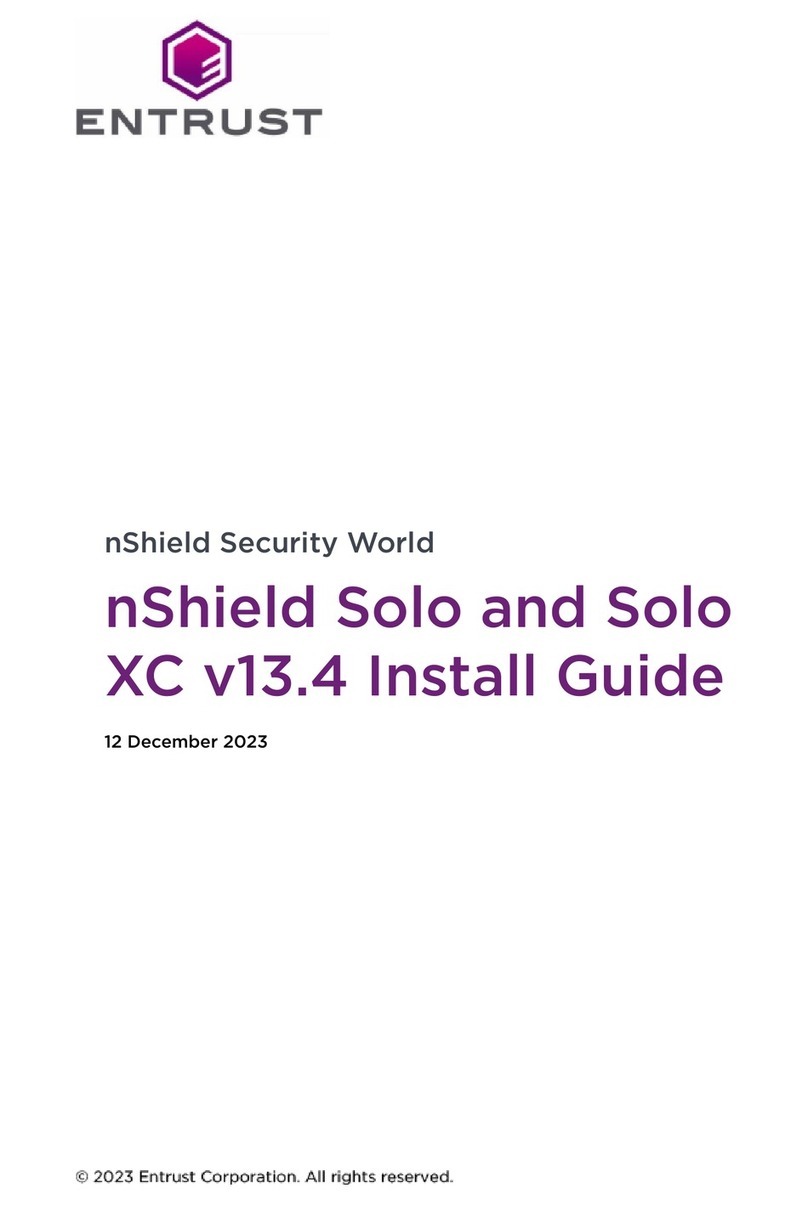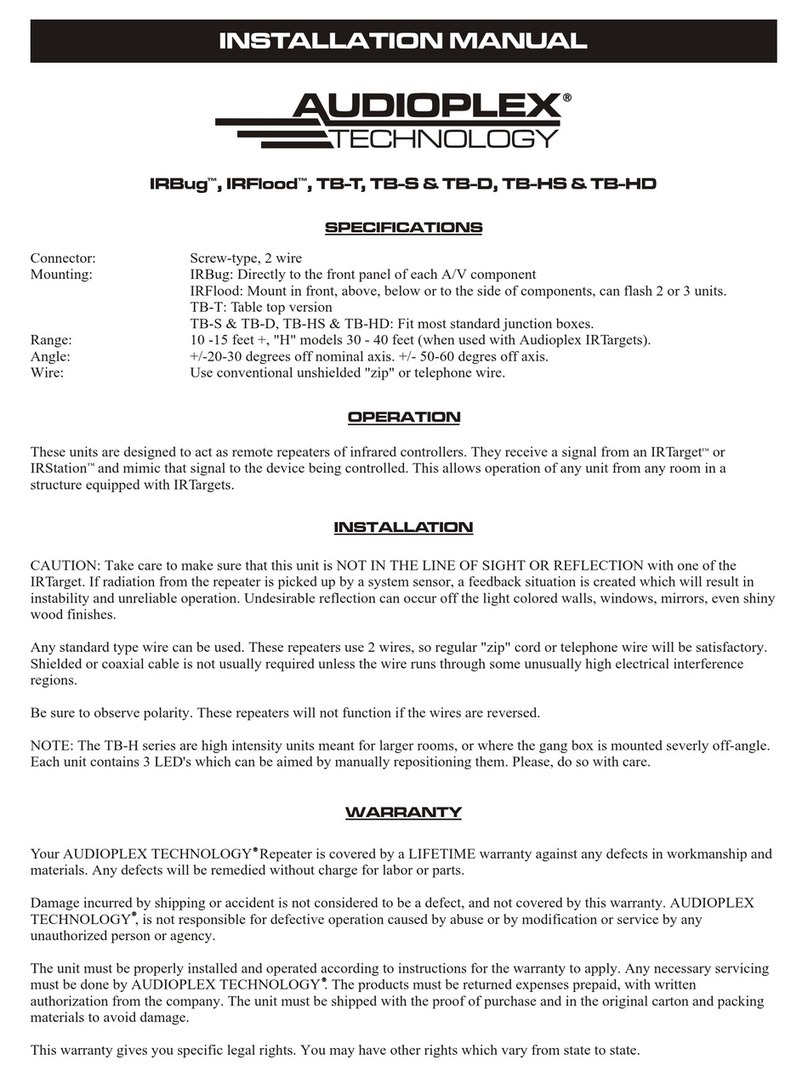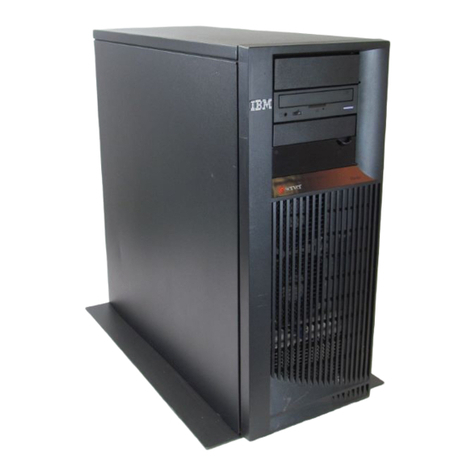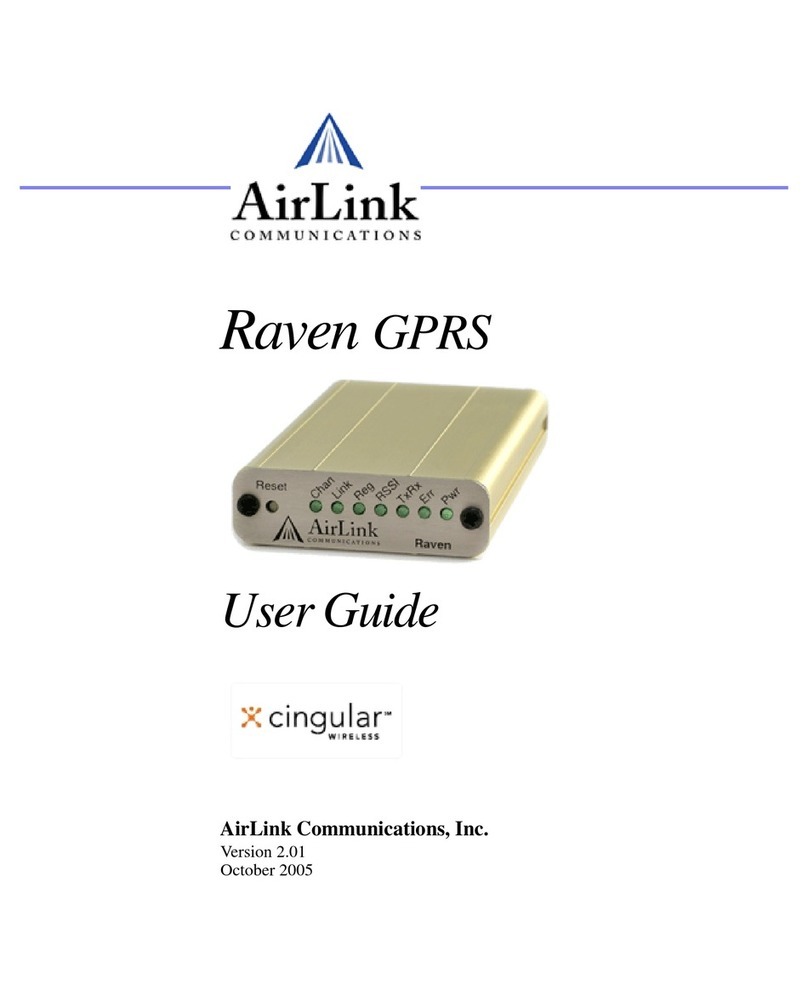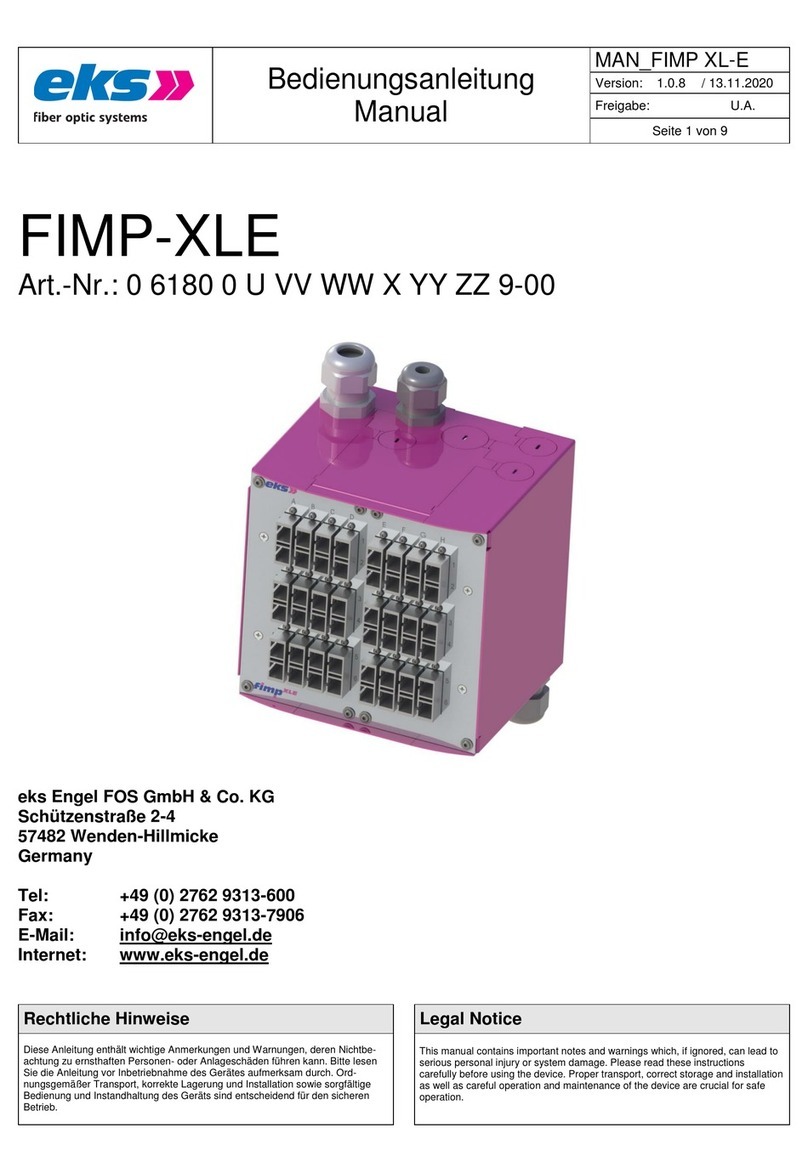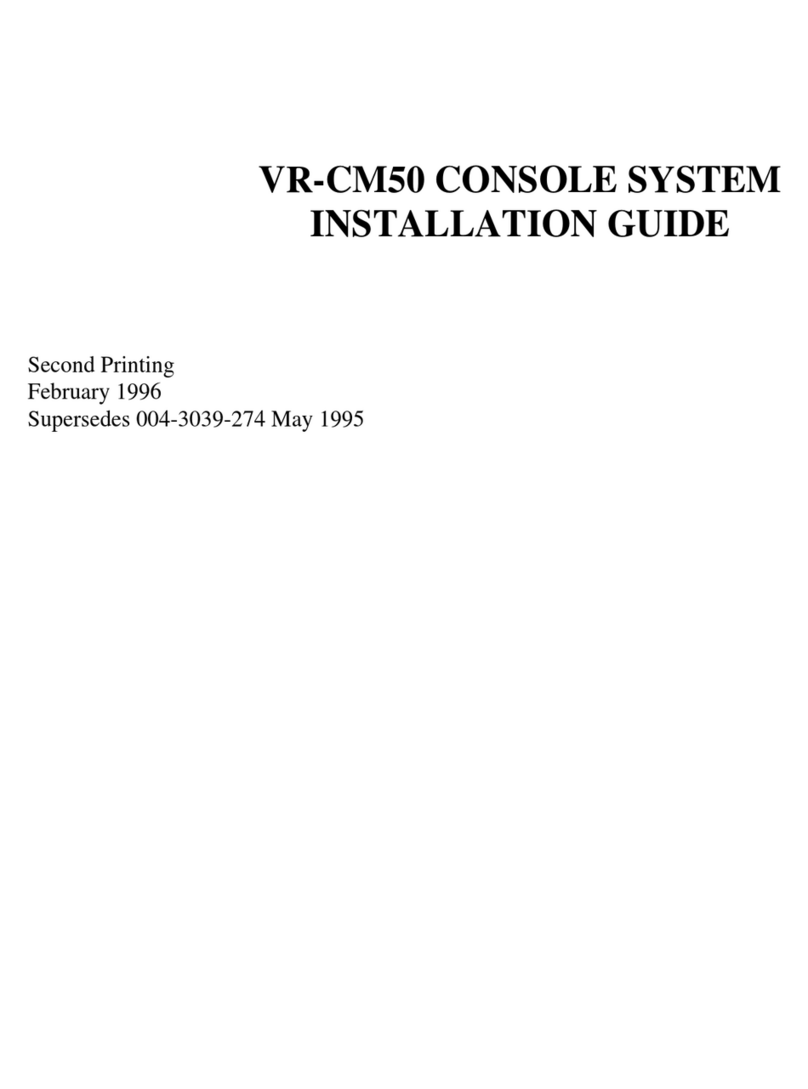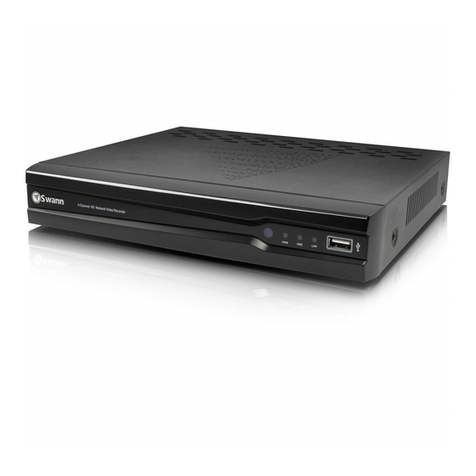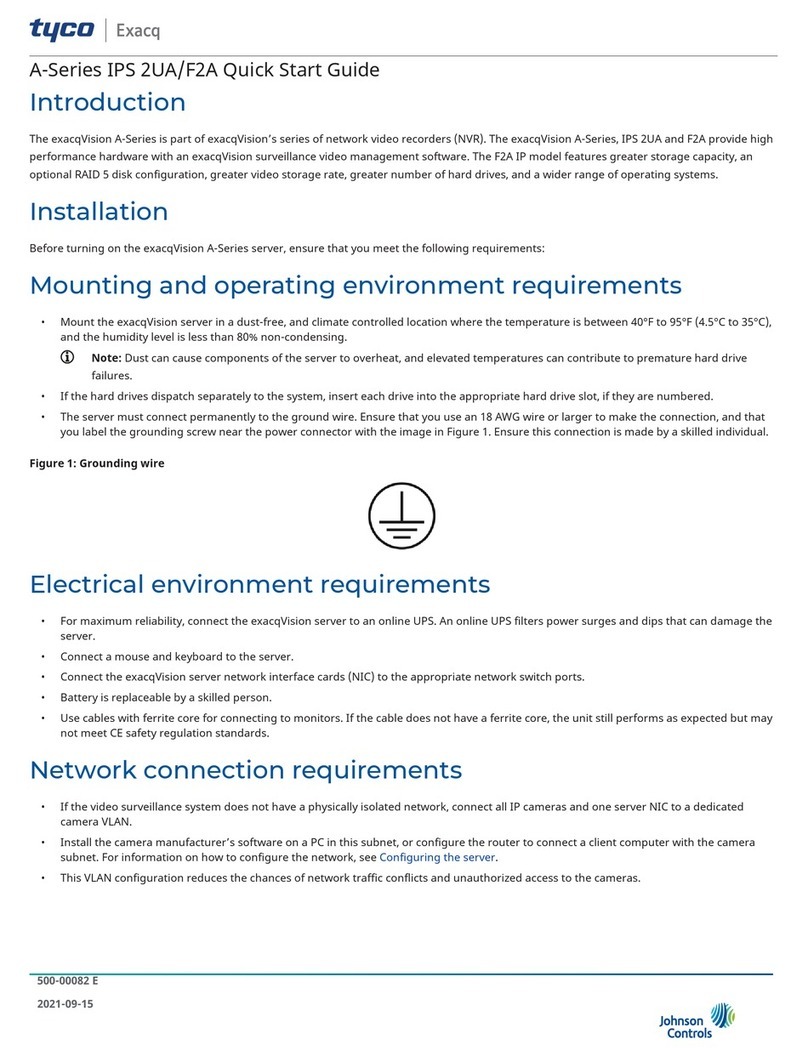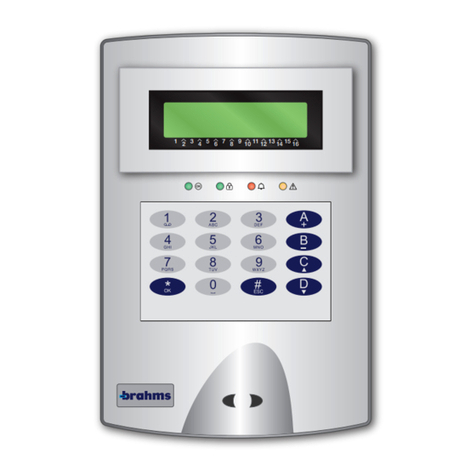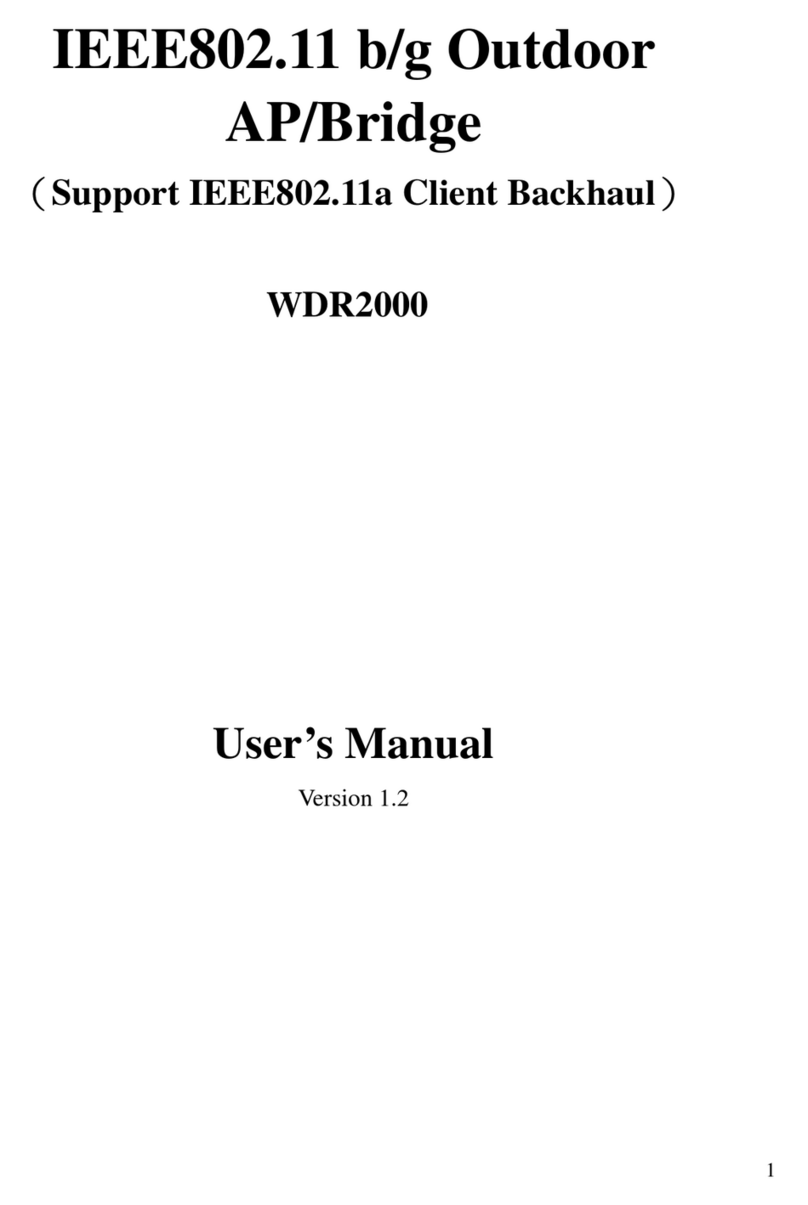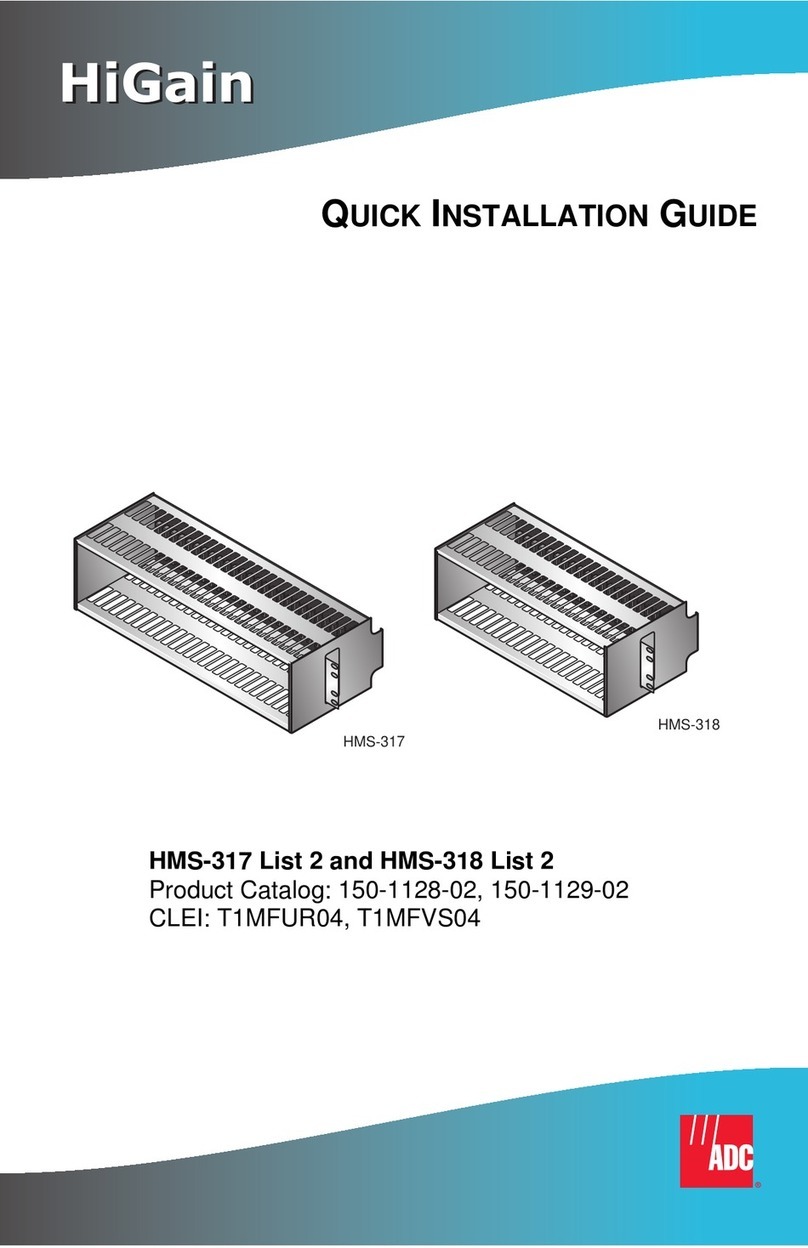Entrust nShield 5c User manual

nShield® 5c
Installation Guide
13.3
04 May 2023

Contents
1. Introduction. . . . . . . . . . . . . . . . . . . . . . . . . . . . . . . . . . . . . . . . . . . . . . . . . . . . . . . . . . . . . . . . . . . Ê4
1.1. About this guide . . . . . . . . . . . . . . . . . . . . . . . . . . . . . . . . . . . . . . . . . . . . . . . . . . . . . . . . . . Ê4
1.2. Handling an nShield nShield 5c . . . . . . . . . . . . . . . . . . . . . . . . . . . . . . . . . . . . . . . . . . . . . Ê5
1.3. Environmental requirements . . . . . . . . . . . . . . . . . . . . . . . . . . . . . . . . . . . . . . . . . . . . . . . Ê6
1.4. Physical location considerations . . . . . . . . . . . . . . . . . . . . . . . . . . . . . . . . . . . . . . . . . . . . Ê7
2. Recycling and disposal information. . . . . . . . . . . . . . . . . . . . . . . . . . . . . . . . . . . . . . . . . . . . . . Ê8
3. Before you install the software. . . . . . . . . . . . . . . . . . . . . . . . . . . . . . . . . . . . . . . . . . . . . . . . . . Ê9
3.1. Preparatory tasks before installing software . . . . . . . . . . . . . . . . . . . . . . . . . . . . . . . . . Ê9
3.2. Firewall settings . . . . . . . . . . . . . . . . . . . . . . . . . . . . . . . . . . . . . . . . . . . . . . . . . . . . . . . . . Ê12
4. Installing the software . . . . . . . . . . . . . . . . . . . . . . . . . . . . . . . . . . . . . . . . . . . . . . . . . . . . . . . . Ê14
4.1. Installing the Security World Software on Windows . . . . . . . . . . . . . . . . . . . . . . . . . . Ê14
4.2. Installing the Security World Software on Linux . . . . . . . . . . . . . . . . . . . . . . . . . . . . . Ê15
5. Before installing an HSM. . . . . . . . . . . . . . . . . . . . . . . . . . . . . . . . . . . . . . . . . . . . . . . . . . . . . . . Ê17
5.1. Carefully unpack the HSM . . . . . . . . . . . . . . . . . . . . . . . . . . . . . . . . . . . . . . . . . . . . . . . . . Ê17
5.2. Check that all parts on the packing list are present . . . . . . . . . . . . . . . . . . . . . . . . . . Ê17
5.3. Check the physical security of the HSM . . . . . . . . . . . . . . . . . . . . . . . . . . . . . . . . . . . . Ê17
6. Installing an HSM . . . . . . . . . . . . . . . . . . . . . . . . . . . . . . . . . . . . . . . . . . . . . . . . . . . . . . . . . . . . . Ê18
6.1. Connecting Ethernet, console and power cables . . . . . . . . . . . . . . . . . . . . . . . . . . . . . Ê18
6.2. Connecting the Serial Console. . . . . . . . . . . . . . . . . . . . . . . . . . . . . . . . . . . . . . . . . . . . Ê20
6.3. Connecting the optional USB keyboard . . . . . . . . . . . . . . . . . . . . . . . . . . . . . . . . . . . . Ê21
6.4. Checking the installation . . . . . . . . . . . . . . . . . . . . . . . . . . . . . . . . . . . . . . . . . . . . . . . . . Ê21
7. Front panel controls . . . . . . . . . . . . . . . . . . . . . . . . . . . . . . . . . . . . . . . . . . . . . . . . . . . . . . . . . . Ê22
8. Top-level menu . . . . . . . . . . . . . . . . . . . . . . . . . . . . . . . . . . . . . . . . . . . . . . . . . . . . . . . . . . . . . . Ê23
9. Basic HSM, RFS and client configuration . . . . . . . . . . . . . . . . . . . . . . . . . . . . . . . . . . . . . . . . Ê25
9.1. About nShield nShield 5c and client configuration . . . . . . . . . . . . . . . . . . . . . . . . . . . Ê25
9.2. Basic nShield nShield 5c and RFS configuration . . . . . . . . . . . . . . . . . . . . . . . . . . . . Ê26
9.3. Basic configuration of the client to use the nShield nShield 5c . . . . . . . . . . . . . . . Ê49
9.4. Basic configuration of an nShield nShield 5c to use a client . . . . . . . . . . . . . . . . . . Ê52
9.5. Restarting the hardserver . . . . . . . . . . . . . . . . . . . . . . . . . . . . . . . . . . . . . . . . . . . . . . . . Ê56
9.6. Zero touch configuration of an nShield nShield 5c . . . . . . . . . . . . . . . . . . . . . . . . . . Ê56
9.7. Checking the installation . . . . . . . . . . . . . . . . . . . . . . . . . . . . . . . . . . . . . . . . . . . . . . . . . Ê59
9.8. Using a Security World . . . . . . . . . . . . . . . . . . . . . . . . . . . . . . . . . . . . . . . . . . . . . . . . . . Ê59
10. Troubleshooting . . . . . . . . . . . . . . . . . . . . . . . . . . . . . . . . . . . . . . . . . . . . . . . . . . . . . . . . . . . . Ê60
10.1. Checking operational status. . . . . . . . . . . . . . . . . . . . . . . . . . . . . . . . . . . . . . . . . . . . . . Ê60
10.2. Module overheating . . . . . . . . . . . . . . . . . . . . . . . . . . . . . . . . . . . . . . . . . . . . . . . . . . . . Ê65
10.3. Log messages for the module. . . . . . . . . . . . . . . . . . . . . . . . . . . . . . . . . . . . . . . . . . . . Ê65
10.4. Utility error messages. . . . . . . . . . . . . . . . . . . . . . . . . . . . . . . . . . . . . . . . . . . . . . . . . . . Ê67
11. HSM maintenance. . . . . . . . . . . . . . . . . . . . . . . . . . . . . . . . . . . . . . . . . . . . . . . . . . . . . . . . . . . . Ê68
nShield® 5c Installation Guide 2 of 77

11.1. Flash testing the module . . . . . . . . . . . . . . . . . . . . . . . . . . . . . . . . . . . . . . . . . . . . . . . . . Ê68
12. Approved accessories. . . . . . . . . . . . . . . . . . . . . . . . . . . . . . . . . . . . . . . . . . . . . . . . . . . . . . . . Ê69
Appendix A: Uninstalling existing software . . . . . . . . . . . . . . . . . . . . . . . . . . . . . . . . . . . . . . . . Ê70
A.1. Uninstalling the Security World Software on Windows . . . . . . . . . . . . . . . . . . . . . . . Ê71
A.2. Uninstalling the Security World Software on Linux . . . . . . . . . . . . . . . . . . . . . . . . . . Ê71
Appendix B: Software packages on the Security World software installation media . . . . Ê73
B.1. Security World installation media. . . . . . . . . . . . . . . . . . . . . . . . . . . . . . . . . . . . . . . . . . Ê73
B.2. Components required for particular functionality . . . . . . . . . . . . . . . . . . . . . . . . . . . Ê74
B.3. nCipherKM JCA/JCE cryptographic service provider . . . . . . . . . . . . . . . . . . . . . . . . Ê75
B.4. SNMP monitoring agent . . . . . . . . . . . . . . . . . . . . . . . . . . . . . . . . . . . . . . . . . . . . . . . . . Ê76
Appendix C: Valid IPv6 Addresses. . . . . . . . . . . . . . . . . . . . . . . . . . . . . . . . . . . . . . . . . . . . . . . . Ê77
nShield® 5c Installation Guide 3 of 77

1. Introduction
The Entrust nShield nShield 5c is a Hardware Security Module (HSM) that provides
secure cryptographic processing within a tamper-resistant casing. Each nShield nShield
5c is configured to communicate with one or more client computers over an Ethernet
network. A client is a computer using the nShield nShield 5c for cryptography. You can
also configure clients to use other nShield HSMs on the network, as well as locally
installed HSMs.
1.1. About this guide
This guide includes:
•Installing the Security World Software. See Installing the software.
•Physically installing an nShield nShield 5c. See Installing an HSM.
•Configuring an nShield nShield 5c and client. See Basic HSM, RFS and client
configuration.
•The nShield nShield 5c front panel controls. See Front panel controls.
•The top-level menu of an nShield nShield 5c. See Top-level menu.
•Troubleshooting information. See Troubleshooting.
•nShield nShield 5c maintenance. See HSM maintenance.
•Accessories. See Approved accessories.
•Instructions to uninstall existing software. See Uninstalling existing software.
•Software components and bundles. See Software packages on the Security World
software installation media.
See the nShield nShield 5c User Guide for more about, for example:
•Creating and managing a Security World
•Creating and using keys
•Card sets
•The advanced features of an nShield nShield 5c.
For information on integrating Entrust nShield products with third-party enterprise
applications, see https://www.entrust.com/digital-security/hsm.
1.1.1. Model numbers
Model numbering conventions are used to distinguish different nShield hardware security
devices.
nShield® 5c Installation Guide 4 of 77

Model number Used for
NH2096-B nShield nShield 5c Base
NH2096-M nShield nShield 5c Medium
NH2096-H nShield nShield 5c High
1.1.2. Power and safety requirements
The module draws up to 220 watts:
•Voltage: 100 VAC -240 VAC
•Current: 2.0 A - 1.0 A
•Frequency: 50 Hz - 60 Hz.
The module PSUs are compatible with international mains voltage
supplies.
1.1.3. Terminology
The nShield nShield 5c is referred to as the nShield nShield 5c, the Hardware Security
Module, or the HSM.
1.2. Handling an nShield nShield 5c
An nShield nShield 5c contains solid-state devices that can withstand normal handling.
However, do not drop the module or expose it to excessive vibration.
If you are installing the module in a 19” rack, make sure that you follow the nShield
nShield 5c Slide Rails Instructions provided with the rails. In particular, be careful of sharp
edges.
Only experienced personnel should handle or install an nShield nShield 5c. Always
consult your company health and safety policy before attempting to lift and carry the
module. Two competent persons are required if it is necessary to lift the module to a
level above head height (for example, during installation in a rack or when placing the
module on a high shelf).
1.2.1. Weight and Dimensions
Weight:ÊÊ11.5kg
nShield® 5c Installation Guide 5 of 77

Dimensions:Ê43.4mm x 430mm x 690mm
The module is compatible with 1U 19” rack systems.
Measurements given are height x width x length/depth. If the inner slide rails are
attached, the width of the unpackaged module is 448mm.
1.3. Environmental requirements
To ensure good air flow through and around the module after installation, do not
obstruct either the fans and vents at the rear or the vent at the front. Ensure that there is
an air gap around the module, and that the rack itself is located in a position with good
air flow.
1.3.1. Temperature and humidity recommendations
Entrust recommends that your module operates within the following environmental
conditions.
Environmental conditions Operating range
(Min.ÊÊ|ÊÊMax.)
Comments
Operating temperature 5 °C 35 °C -
Storage temperature -20 °C 70 °C -
Operating humidity 10 % 85 % Relative. Non-condensing at
35 °C.
Storage humidity 0 % 95 % Relative. Non-condensing at
35 °C.
Altitude -100 m 2000 m Above Mean Sea Level
(AMSL)
1.3.2. Cooling requirements
Adequate cooling of your module is essential for trouble-free operation and a long
operational life. During operation, you can use the supplied stattree utility to check the
actual and maximum temperature of the module. You are advised to do this directly after
installing the unit in its normal working environment. Monitor the temperature of the unit
over its first few days of operation.
In the unlikely event that the internal encryption module overheats, the module shuts
nShield® 5c Installation Guide 6 of 77

down (see Module Overheating). If the whole nShield nShield 5c overheats, the orange
warning LED on the front panel illuminates (see Orange warning LED) and a critical error
message is shown on the display.
1.4. Physical location considerations
Entrust nShield HSMs are certified to NIST FIPS 140 Level 2 and 3. In addition to the
intrinsic protection provided by an nShield HSM, customers must exercise due diligence
to ensure that the environment within which the nShield HSMs are deployed is
configured properly and is regularly examined as part of a comprehensive risk mitigation
program to assess both logical and physical threats. Applications running in the
environment shall be authenticated to ensure their legitimacy and to thwart possible
proliferation of malware that could infiltrate these as they access the HSMs’
cryptographic services. The deployed environment must adopt 'defense in depth'
measures and carefully consider the physical location to prevent detection of
electromagnetic emanations that might otherwise inadvertently disclose cryptographic
material.
nShield® 5c Installation Guide 7 of 77

2. Recycling and disposal information
For recycling and disposal guidance, see the nShield product’s Warnings and Cautions
documentation.
nShield® 5c Installation Guide 8 of 77

3. Before you install the software
Before you install the software, you should:
•If required, install an optional nToken in the client computer, see nToken Installation
Guide for more information about the installation steps.
•Uninstall any older versions of Security World Software. See Uninstalling existing
software.
•If the nShield Remote Administration Client is installed on the machine, remove it.
You will also have to re-install it after you installed the new Security World software
version. See the nShield Remote Administration User Guide.
•Complete any other necessary preparatory tasks, as described in Preparatory tasks
before installing software.
3.1. Preparatory tasks before installing software
Perform any of the necessary preparatory tasks described in this section before installing
the Security World Software on the client computer.
3.1.1. Windows
Adjust your computer’s power saving setting to prevent sleep mode.
3.1.1.1. Install Microsoft security updates
Make sure that you have installed the latest Microsoft security updates. Information
about Microsoft security updates is available from http://www.microsoft.com/security/.
3.1.2. Linux
3.1.2.1. Install operating environment patches
Make sure that you have installed:
•kernel packages like gcc, kernel-headers, kernel-devel
•the latest recommended patches for your environment in general
See the documentation supplied with your operating environment for information.
3.1.2.2. Users and groups
The installer automatically creates the following group and users if they do not exist. If
nShield® 5c Installation Guide 9 of 77

you wish to create them manually, you should do so before running the installer.
Create the following, as required:
•The nfast user in the nfast group, using /opt/nfast as the home directory.
•If you are installing snmp, the ncsnmpd user in the ncsnmpd group, using /opt/nfast as
the home directory.
•If you are installing the Remote Administration Service, the raserv user in the raserv
group, using /opt/nfast as the home directory.
3.1.3. All environments
3.1.3.1. Install Java with any necessary patches
The following versions of Java have been tested to work with, and are supported by, your
nShield Security World Software:
•Java7 (or Java 1.7x)
•Java8 (or Java 1.8x)
•Java11.
Entrust recommends that you ensure Java is installed before you install the Security
World Software. The Java executable must be on your system path.
If you can do so, please use the latest Java version currently supported by Entrust that is
compatible with your requirements. Java versions before those shown are no longer
supported. If you are maintaining older Java versions for legacy reasons, and need
compatibility with current nShield software, please contact Entrust nShield Support,
https://nshieldsupport.entrust.com.
To install Java you may need installation packages specific to your operating system,
which may depend on other pre-installed packages to be able to work.
Suggested links from which you may download Java software as appropriate for your
operating system:
•http://www.oracle.com/technetwork/java/index.html
•http://www.oracle.com/technetwork/java/all-142825.html
You must have Java installed to use KeySafe.
3.1.3.2. Identify software components to be installed
Entrust supply standard component bundles that contain many of the necessary
nShield® 5c Installation Guide 10 of 77

components for your installation and, in addition, individual components for use with
supported applications. To be sure that all component dependencies are satisfied, you
can install either:
•All the software components supplied.
•Only the software components you require.
During the installation process, you are asked to choose which bundles and components
to install. Your choice depends on a number of considerations, including:
•The types of application that are to use the module.
•The amount of disc space available for the installation.
•Your company’s policy on installing software. For example, although it may be
simpler to choose all software components, your company may have a policy of not
installing any software that is not required.
On Windows, the nShield Hardware Support bundle and the nShield
CoreÊTools bundle are mandatory, and are always installed.
The Core Tools bundle contains all the Security World Software command-line utilities,
including:
•generatekey.
•Low level utilities.
•Test programs.
The Core Tools bundle includes the Tcl run time component that installs a run-time Tcl
installation within the nCipher directories. This is used by the tools for creating the
Security World and by KeySafe. This does not affect any other installation of Tcl on your
computer.
You need to install the Remote Administration Service component if you require remote
administration functionality. See Preparatory tasks before installing software and the
nShield nShield 5c User Guide for more about the Remote Administration Service.
Always install all the nShield components you need in a single
installation process to avoid subsequent issues should you wish to
uninstall. You should not, for example, install the Remote
Administration Service from the Security World installation media, then
later install the Remote Administration Client from the client installation
media.
Ensure that you have identified any optional components that you require before you
install the Security World Software. See Software packages on the Security World
nShield® 5c Installation Guide 11 of 77

software installation media for more about optional components.
3.2. Firewall settings
When setting up your firewall, you should ensure that the port settings are compatible
with the HSMs and allow access to the system components you are using.
The following table identifies the ports used by the nShield system components. All listed
ports are the default setting. Other ports may be defined during system configuration,
according to the requirements of your organization.
Component Default
Port
Protocol Use
Hardserver 9000 TCP Internal non-privileged connections
from Java applications including
KeySafe
Hardserver 9001 TCP Internal privileged connections from
Java applications including KeySafe
Hardserver 9004 TCP Incoming impath connections from
other hardservers, for example:
* From an HSM to the Remote File
System (RFS).
* From a non-attended HSM to an
attended host machine when using
Remote Operator.
Hardserver in the HSM 9004 TCP Incoming impath connections from
client machines
Remote Administration
Service
9005 TCP Incoming connections from Remote
Administration Clients
Audit Logging syslog 514 UDP If you plan to use the Audit Logging
facility with remote syslog or SIEM
applications, you need to allow
outgoing connections to the
configured UDP port
If you are setting up an RFS or exporting a slot for Remote Operator functionality, you
need to open port 9004. You may restrict the IP addresses to those you expect to use
nShield® 5c Installation Guide 12 of 77

this port. You can also restrict the IP addresses accepted by the hardserver in the
configuration file. See the nShield nShield 5c User Guide for more about configuration
files. Similarly if you are setting up the Remote Administration Service you need to open
port 9005.
nShield® 5c Installation Guide 13 of 77

4. Installing the software
This chapter describes how to install the Security World Software on the computer,
client, or RFS associated with your nShield HSM.
After you have installed the software, you must complete further Security World creation,
configuration and setup tasks before you can use your nShield environment to protect
and manage your keys. See the nShield nShield 5c User Guide for more about creating a
Security World and the appropriate Card Sets, and further configuration or setup tasks.
If you are planning to use an nToken with a client, this should be
physically installed in the client before installing the Security World
software, see the nToken Installation Guide.
4.1. Installing the Security World Software on Windows
For information about configuring silent installations and uninstallations on Windows, see
the nShield nShield 5c User Guide
For a regular installation:
1. Log in as Administrator or as a user with local administrator rights.
If the Found New Hardware Wizard appears and prompts you to install drivers,
cancel this notification, and continue to install the Security World Software as
normal. Drivers are installed during the installation of the Security World Software.
2. Place the Security World Software installation media in the optical disc drive.
3. Launch setup.msi manually when prompted.
4. Follow the onscreen instructions.
5. Accept the license terms and select Next to continue.
6. Specify the installation directory and select Next to continue.
7. Select all the components required for installation.
By default, all components are selected. Use the drop-down menu to deselect the
components that you do not want to install. nShield Hardware Support and Core
Tools are necessary to install the Security World Software.
See Software packages on the Security World software installation media for more
about the component bundles and the additional software supplied on your
installation media.
8. Select Install.
nShield® 5c Installation Guide 14 of 77

The selected components are installed in the chosen installation directory. The
installer creates links to the following nShield Cryptographic Service Provider (CSP)
setup wizards as well as remote management tools under the Windows Start menu:
Start > Entrust nShield Security World:
◦If nShield CSPs (CAPI, CNG) was selected: 32bit CSP install wizard, which sets
up CSPs for 32-bit applications.
◦If nShield CSPs (CAPI, CNG) was selected: 64bit CSP install wizard, which sets
up CSPs for 64-bit applications.
◦If nShield CSPs (CAPI, CNG) was selected: CNG configuration wizard, which
sets up the CNG providers.
◦If nShield Java was selected: KeySafe, which runs the key management
application.
◦If nShield Remote Administration Client Tools was selected: Remote
Administration Client, which runs the remote administration client.
If selected, the SNMP agent will be installed, but will not be added to the Services
area in Control Panel →Administrative Tools of the target Windows machine. If you
wish to install the SNMP agent as a service, please consult the SNMP monitoring
agent section in the nShield nShield 5c User Guide.
9. Select Finish to complete the installation.
The following global variables are set upon install:
◦%NFAST_CERTDIR%
◦%NFAST_HOME%
◦%NFAST_KMDATA%
◦%NFAST_LOGDIR%
4.2. Installing the Security World Software on Linux
In the following instructions, disc-name is the name of the mount point
of the installation media.
1. Log in as a user with root privileges.
2. Place the installation media in the optical disc drive, and mount the drive.
3. Open a terminal window, and change to the root directory.
4. Extract the required .tar files to install all the software bundles by running
commands of the form:
nShield® 5c Installation Guide 15 of 77

tar xf disc-name/linux/ver/<file>.tar.gz
In this command, ver is the architecture of the operating system (for example, i386
or amd64), and file.tar is the name of a .tar.gz file for that component.
See Software packages on the Security World software installation media for more
about the component bundles and the additional software supplied on your
installation media.
5. Run the install script by using the following command:
/opt/nfast/sbin/install
6. Log in to your normal account.
7. Add /opt/nfast/bin to your PATH system variable:
◦If you use the Bourne shell, add these lines to your system or personal profile:
PATH=/opt/nfast/bin:$PATH
export PATH
◦If you use the C shell, add this line to your system or personal profile:
setenv PATH /opt/nfast/bin:$PATH
nShield® 5c Installation Guide 16 of 77

5. Before installing an HSM
5.1. Carefully unpack the HSM
Retain all parts of the HSM packaging, including the outer (brown) shipping carton, in
case you have to return the HSM. Your warranty or maintenance agreement does not
cover returned modules that are Êdamaged due to shipping in non-approved packaging.
5.2. Check that all parts on the packing list are present
The packing list contains a full list of items shipped with the HSM. If any item is missing,
contact Support.
Any optional parts ordered, for example slide rail components, might
not appear on the packing list. If any optional components are missing,
contact Support.
5.3. Check the physical security of the HSM
See the nShield Connect and nShield 5c Physical Security Checklist, provided in the box
with the HSM.
Breaking the security seal or dismantling the HSM voids your warranty cover, and any
existing maintenance and support agreements.
nShield® 5c Installation Guide 17 of 77

6. Installing an HSM
This chapter describes how to install the nShield nShield 5c in a rack, cabinet, or shelf.
For more information about connecting the nShield nShield 5c to the network, and
configuring it for connection to one or more clients on the network, see the nShield
nShield 5c User Guide.
Always handle modules correctly. Take due account of the weight and
dimensions of the nShield nShield 5c when selecting a location for
storage or installation. For more information, see Handling an nShield
nShield 5c in Introduction.
You cannot install or configure the nShield nShield 5c remotely.
To install the nShield nShield 5c in a 19” rack, follow the instructions supplied with your
rack mounting kit.
To install the nShield nShield 5c in a cabinet or a shelf, fit the four self-adhesive rubber
feet (supplied with the HSM) to the bottom of the HSM. An Xis scored into the chassis at
each of the four corners on the bottom of the HSM as a guide to placing the feet.
6.1. Connecting Ethernet, console and power cables
The nShield nShield 5c is an Ethernet network device capable of supporting up to 100m
of Ethernet cable. You must use a CAT5e UTP cable or better when connecting the HSM
to a 100Mbit or 1Gbit Ethernet device. You must use a CAT3 cable or better for 10Mbit
connections.
The connectors for Ethernet cables and mains power cables are at the rear of the nShield
nShield 5c.
Ensure that:
•All power cables are routed to avoid sharp bends, hot surfaces, pinches, and
abrasion.
•You connect mains power cables to both the PSUs.
•The rocker switch for each PSU is in the on position.
The following image shows the Ethernet, console and mains power connections:
nShield® 5c Installation Guide 18 of 77

Key Description
A Green LED if on, confirms power is on and unit is not in Standby mode
B Mains power connection
C Rocker switch to turn PSU on and off
D Ethernet port. Two Ethernet ports are available. Port 1 is the left-hand
connector when the nShield nShield 5c is viewed from the back
E RJ45 port for a serial console cable
If you connect only one Ethernet cable to the nShield nShield 5c,
Entrust recommends that you connect it to Ethernet port 1. This is the
left-hand Ethernet connector on the rear of the nShield nShield 5c
(shaded in the image).
If the green LED is on, the PSU is operational and receiving power, and is not in Standby
mode. If a power cable is not fitted correctly, or a rocker switch is not turned on, an
audible warning is given and the orange warning LED on the front panel is turned on.
For more information:
•Audible warnings, see Audible warning.
•The orange warning LED, see Orange warning LED.
nShield® 5c Installation Guide 19 of 77

•Identifying and replacing a faulty PSU, see the nShield nShield 5c Power Supply Unit
Installation Sheet.
6.2. Connecting the Serial Console
On supported nShield nShield 5c hardware variants (see see Model numbers in
Introduction) there is a serial console port that provides access to a serial console
command line interface that enables remote configuration of the nShield nShield 5c (See
the nShield nShield 5c User Guide).
The RJ45 connector for the serial cable is at the rear of the nShield nShield 5c and is
labelled Console (Connecting Ethernet, console and power cables. The connector can be
directly connected to your client machine or connected to a serial port aggregator for
remote access. For a specification of the serial cable required, see Serial Console cable
pinout information. The serial port will operate at 9600 baud, 8 data bits, no parity, and 1
stop bit (9600/8-N-1).
It is recommended to use a shielded cable for the serial connection as
the EMI noise from other devices in vicinity may affect the
communication over the serial connection.
6.2.1. Serial Console cable pinout information
The pinout information for the RJ-45 to DB-9 cable to be used to access the nShield
nShield 5c Serial Console is provided in the table below:
Signal Console Port (DTE)
RJ-45 Pin
Adapter DB-9 Pin Signal
CTS 1 7 RTS
DTR 2 4 DSR
TxD 3 3 RxD
GND 4 5 GND
GND 5 5 GND
RxD 6 2 TxD
DSR 7 6 DTR
RTS 8 8 CTS
nShield® 5c Installation Guide 20 of 77
Table of contents
Other Entrust Network Hardware manuals
